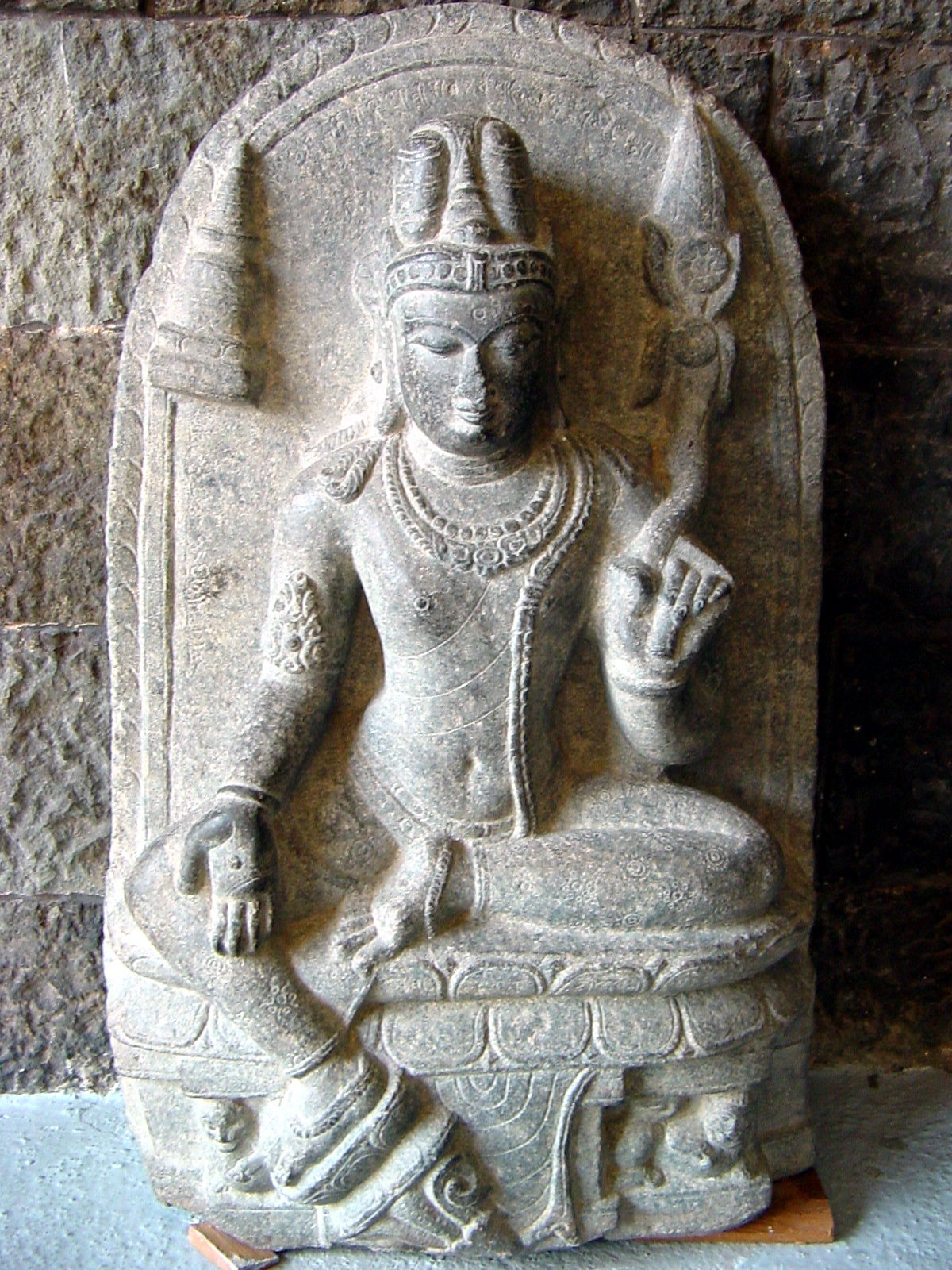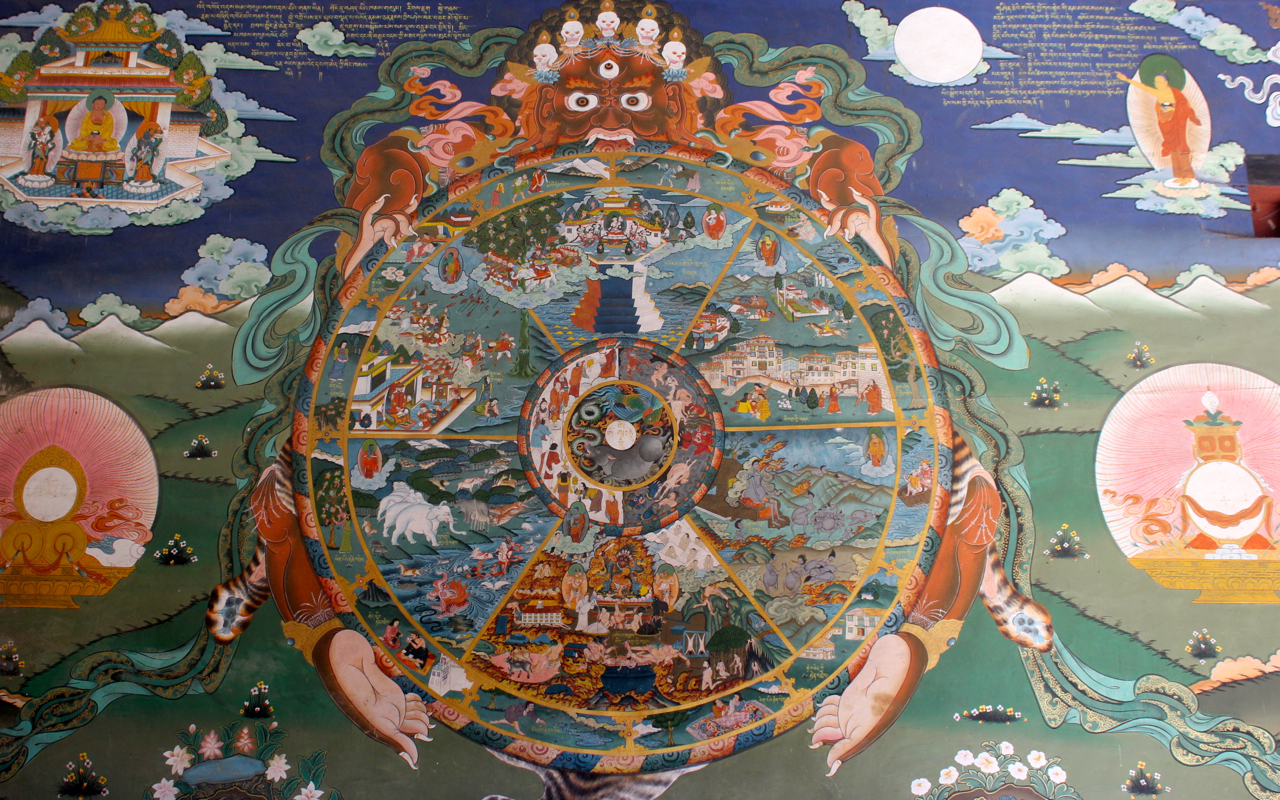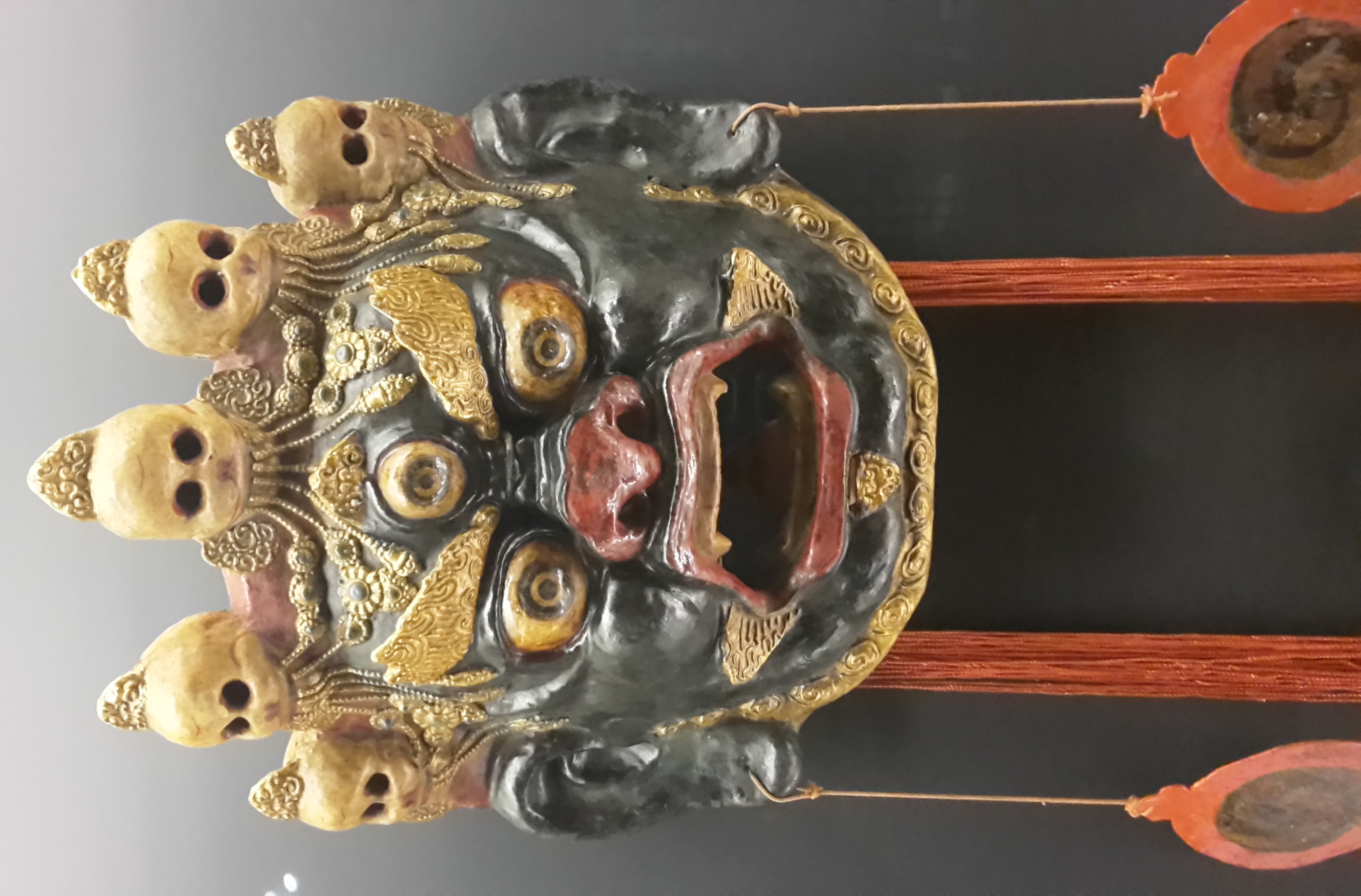|
Buddha Tooth Relic Temple
The Buddha Tooth Relic Temple and Museum ( zh, 新加坡佛牙寺龍華院) is a Buddhist temple and museum complex located in the Chinatown district of Singapore. The temple's monastics and devotees officially practice Chinese Buddhism. Overview The temple was built based on the Chinese Buddhist architectural style of the Tang dynasty (as well as incorporating slight Tibetan Buddhist influences in certain rooms) to house the tooth relic of the historical Buddha. It is claimed that the relic of Buddha from which it gains its name was found in a collapsed stupa. The size of the tooth - measuring 7.5 cm - is also far too long for a human tooth. The relic can be viewed by the public at the 4th floor of the temple. The basement of the temple holds a theatre and a vegetarian dining hall that serve complimentary meals, though donations are accepted. History Ven. Shi Fa Zhao, the current president and abbot of Buddha Tooth Relic Temple and Museum, was approached by STB to r ... [...More Info...] [...Related Items...] OR: [Wikipedia] [Google] [Baidu] |
Buddhism
Buddhism ( , ), also known as Buddha Dharma and Dharmavinaya (), is an Indian religion or philosophical tradition based on teachings attributed to the Buddha. It originated in northern India as a -movement in the 5th century BCE, and gradually spread throughout much of Asia via the Silk Road. It is the world's fourth-largest religion, with over 520 million followers (Buddhists) who comprise seven percent of the global population. The Buddha taught the Middle Way, a path of spiritual development that avoids both extreme asceticism and hedonism. It aims at liberation from clinging and craving to things which are impermanent (), incapable of satisfying ('), and without a lasting essence (), ending the cycle of death and rebirth (). A summary of this path is expressed in the Noble Eightfold Path, a training of the mind with observance of Buddhist ethics and meditation. Other widely observed practices include: monasticism; " taking refuge" in the Buddha, the , and the ; ... [...More Info...] [...Related Items...] OR: [Wikipedia] [Google] [Baidu] |
Varadamudra
Varadamudra is a mudra, and it indicates a gesture by the hand and symbolizes dispensing of boons. For varadamudra, the right hand is used. It is held out, with palm uppermost and the fingers pointing downwards. Varadamudra and abhayamudra are the most common of several other mudras seen on divine figures in the art of Indian religions Indian religions, sometimes also termed Dharmic religions or Indic religions, are the religions that originated in the Indian subcontinent. These religions, which include Hinduism, Jainism, Buddhism, and Sikhism,Adams, C. J."Classification of .... Often the open hand is shown with a lotus bud in the centre. References *''Dictionary of Hindu Lore and Legend'' () by Anna Dallapiccola Buddhist rituals Hand gestures Hindu philosophical concepts Mudras {{Buddhism-stub ... [...More Info...] [...Related Items...] OR: [Wikipedia] [Google] [Baidu] |
Sangha
Sangha is a Sanskrit word used in many Indian languages, including Pali meaning "association", "assembly", "company" or "community"; Sangha is often used as a surname across these languages. It was historically used in a political context to denote a governing assembly in a republic or a kingdom, and has long been used by religious associations including the Buddhists, Jains and Sikhs. Given this history, some Buddhists have said the tradition of the ''sangha'' represents humanity's oldest surviving democratic institution. In Buddhism, ''sangha'' refers to the monastic community of ''bhikkhu'' (monks) and '' bhikkhuni'' (nuns). These communities are traditionally referred to as the ''bhikkhu-sangha'' or ''bhikkhuni-sangha''. As a separate category, those who have attained any of the four stages of enlightenment, whether or not they are members of the monastic community, are referred to as the ''āryasaṅgha'' ("noble Sangha"). According to the Theravada school and Nichir ... [...More Info...] [...Related Items...] OR: [Wikipedia] [Google] [Baidu] |
Mount Putuo
Mount Putuo (, from Sanskrit: "Mount Potalaka") is an island in Putuo District, Zhoushan, Zhejiang, China. It is a renowned site in Chinese Buddhism and is the bodhimaṇḍa of the bodhisattva Guanyin. Mount Putuo is one of the four sacred mountains in Chinese Buddhism, the others being Mount Wutai, Mount Jiuhua, and Mount Emei (bodhimaṇḍas for Manjushri, Kṣitigarbha, and Samantabhadra, respectively). Mount Putuo lies in the East China Sea and incorporates the beauty of both mountain and sea. Mountain Putuo is at 29°58′3~30°02′3 north latitude, 122°21′6~122°24′9 east longitude. Its area is approximately and there are numerous famous temples. Every year on the 19th day of the 2nd lunar month, 19th day of the 6th lunar month, and 19th day of the 9th lunar month of the Chinese calendar, it welcomes millions of people for the celebration of the birth of Guanyin. History Mount Putuo has been a pilgrimage site for over a thousand years. After the Tang ... [...More Info...] [...Related Items...] OR: [Wikipedia] [Google] [Baidu] |
Chinese Zodiac
The Chinese zodiac is a traditional classification scheme based on the lunar calendar that assigns an animal and its reputed attributes to each year in a repeating twelve-year cycle. Originating from China, the zodiac and its variations remain popular in many East Asian and Southeast Asian countries, such as Japan, South Korea, Vietnam, Singapore, Nepal, Bhutan and Thailand. Identifying this scheme using the generic term "''zodiac''" reflects several superficial similarities to the Western zodiac: both have time cycles divided into twelve parts, each labels at least the majority of those parts with names of animals, and each is widely associated with a culture of ascribing a person's personality or events in their life to the supposed influence of the person's particular relationship to the cycle. Nevertheless, there are major differences between the two: the animals of the Chinese zodiac are not associated with constellations spanned by the ecliptic plane. The Chinese twelve- ... [...More Info...] [...Related Items...] OR: [Wikipedia] [Google] [Baidu] |
Wisdom King
A Wisdom King (Sanskrit: विद्याराज; IAST: ''Vidyārāja'', ) is a type of wrathful deity in East Asian Buddhism. Whereas the Sanskrit name is translated literally as "wisdom / knowledge king(s)," the term '' vidyā'' in Vajrayana Buddhism is also specifically used to denote mantras; the term may thus also be rendered "mantra king(s)." ''Vidyā'' is translated in Chinese with the character 明 (lit. "bright, radiant", figuratively "knowledge(able), wisdom, wise"), leading to a wide array of alternative translations such as "bright king(s)" or "radiant king(s)". A similar category of fierce deities known as Herukas are found in Tibetan Buddhism. The female counterparts of Wisdom Kings are known as Wisdom Queens (Sanskrit (IAST): ''Vidyārājñī'', Chinese: 明妃, ''Míngfēi'', Japanese: ''Myōhi''). Overview Development ''Vidyārājas'', as their name suggests, are originally conceived of as the guardians and personifications of esoteric wisdom (''vidyā''), ... [...More Info...] [...Related Items...] OR: [Wikipedia] [Google] [Baidu] |
Bodhisattva
In Buddhism, a bodhisattva ( ; sa, 𑀩𑁄𑀥𑀺𑀲𑀢𑁆𑀢𑁆𑀯 (Brahmī), translit=bodhisattva, label=Sanskrit) or bodhisatva is a person who is on the path towards bodhi ('awakening') or Buddhahood. In the Early Buddhist schools as well as modern Theravada Buddhism, a bodhisattva (Pali: ''bodhisatta'') refers to someone who has made a resolution to become a Buddha and has also received a confirmation or prediction from a living Buddha that this will be so. In Mahayana Buddhism, a bodhisattva refers to anyone who has generated ''bodhicitta'', a spontaneous wish and compassionate mind to attain Buddhahood for the benefit of all sentient beings. Mahayana bodhisattvas are spiritually heroic persons that work to attain awakening and are driven by a great compassion (''mahakaruṇā''). These beings are exemplified by important spiritual qualities such as the "four divine abodes" (''brahmaviharas'') of loving-kindness ('' metta''), compassion (''karuṇā''), empathet ... [...More Info...] [...Related Items...] OR: [Wikipedia] [Google] [Baidu] |
Buddhahood
In Buddhism, Buddha (; Pali, Sanskrit: 𑀩𑀼𑀤𑁆𑀥, बुद्ध), "awakened one", is a title for those who are awake, and have attained nirvana and Buddhahood through their own efforts and insight, without a teacher to point out the dharma (Sanskrit 𑀥𑀭𑁆𑀫; Pali ''dhamma''; "right way of living"). The title is most commonly used for Gautama Buddha, the founder of Buddhism, who is often simply known as "the Buddha". Buddhahood ( sa, 𑀩𑀼𑀤𑁆𑀥𑀢𑁆𑀯, buddhatva; pi, buddhatta or ; ) is the condition and rank of a buddha "awakened one". This highest spiritual state of being is also termed ''sammā-sambodhi'' (skt. samyaksaṃbodhi 'full complete awakening'). The title is also used for other beings who have achieved ''bodhi'' (awakening) and ''moksha'' (release from craving), such as the other human Buddhas who achieved enlightenment before Gautama, the five celestial Buddhas worshiped primarily in Mahayana, and the bodhisattva named M ... [...More Info...] [...Related Items...] OR: [Wikipedia] [Google] [Baidu] |
Siddhaṃ Script
(also '), also known in its later evolved form as Siddhamātṛkā, is a medieval Brahmic abugida, derived from the Gupta script and ancestral to the Nāgarī, Assamese, Bengali, Tirhuta, Odia and Nepalese scripts. The word means "accomplished" or "perfected" in Sanskrit. The script received its name from the practice of writing ', or ' (may there be perfection), at the head of documents. Other names for the script include ''bonji'' ( ja, 梵字) lit. "Brahma's characters" and "Sanskrit script" and lit. "Siddhaṃ script". History The script evolved from the Gupta Brahmi script in the late 6th century CE. Many Buddhist texts taken to China along the Silk Road were written using a version of the script. This continued to evolve, and minor variations are seen across time, and in different regions. Importantly it was used for transmitting the Buddhist tantra texts. At the time it was considered important to preserve the pronunciation of mantras, and Chinese wa ... [...More Info...] [...Related Items...] OR: [Wikipedia] [Google] [Baidu] |
Saṃsāra
''Saṃsāra'' (Devanagari: संसार) is a Pali/Sanskrit word that means "world". It is also the concept of rebirth and "cyclicality of all life, matter, existence", a fundamental belief of most Indian religions. Popularly, it is the cycle of death and rebirth. ''Saṃsāra'' is sometimes referred to with terms or phrases such as transmigration/reincarnation, karmic cycle, or Punarjanman, and "cycle of aimless drifting, wandering or mundane existence". The concept of ''saṃsāra'' has roots in the post-Vedic literature; the theory is not discussed in the Vedas themselves. It appears in developed form, but without mechanistic details, in the early Upanishads. The full exposition of the ''saṃsāra'' doctrine is found in Śramaṇic movements such as early Buddhism and Jainism, as well as various schools of Hindu philosophy after about the mid-1st millennium BCE. The ''saṃsāra'' doctrine is tied to the karma theory of Hinduism, and the liberation from ''saṃsāra ... [...More Info...] [...Related Items...] OR: [Wikipedia] [Google] [Baidu] |
Dharmapala
A ''dharmapāla'' (, , ja, 達磨波羅, 護法善神, 護法神, 諸天善神, 諸天鬼神, 諸天善神諸大眷屬) is a type of wrathful god in Buddhism. The name means "''dharma'' protector" in Sanskrit, and the ''dharmapālas'' are also known as the Defenders of the Justice (Dharma), or the Guardians of the Law. There are two kinds of ''dharmapala'', Worldly Guardians (''lokapala'') and Wisdom Protectors (''jnanapala''). Only Wisdom Protectors are enlightened beings. Description A protector of Buddhist dharma is called a ''dharmapala''. They are typically wrathful deities, depicted with terrifying iconography in the Mahayana and tantric traditions of Buddhism. The wrathfulness is intended to depict their willingness to defend and guard Buddhist followers from dangers and enemies. The '' Aṣṭagatyaḥ'' (the eight kinds of nonhuman beings) is one category of ''dharmapālas'', which includes the Garuda, Deva, Naga, Yaksha, Gandharva, Asura, Kinnara and Mahoraga. In ... [...More Info...] [...Related Items...] OR: [Wikipedia] [Google] [Baidu] |





.jpeg/1200px-Gandhara_Buddha_(tnm).jpeg)


